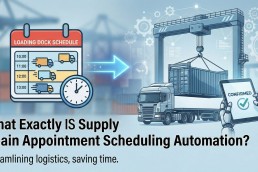Revenue Optimization for Freight Brokerages

In the business world, technology investments are often evaluated based on their ability to either increase revenue or reduce costs. In freight, we can think of technology falling into two broad categories: “revenue generating” and “revenue optimizing”. Understanding this distinction helps clarify the strategic role of different solutions.
Revenue generating technology focuses primarily on expanding the top line. An example is rating automation, which aims to increase topline revenue and load count by enabling companies to quote faster and win more business. This type of technology is directly tied to organizational goals like winning a certain number of loads or achieving specific margin targets, and its success is heavily influenced by market conditions.
However, success in generating more loads can create operational challenges. As the saying goes, “more loads, more problems”. An increased load count directly translates to a greater volume of tasks like more freight to get appointed. This also means potentially having to deal with more issues from the carrier side related to those loads. Without corresponding operational efficiency, the gains from revenue generation can be hampered by bottlenecks and increased workload on the operations team.
This is where revenue optimizing platforms come into play. Solutions like appointment scheduling automation fit into this category. Their primary function is not to win more loads, but to improve the efficiency and speed at which existing loads are processed. They speed up your appointment scheduling and the overall operational workflow. The objective is to enable companies to work smarter and not harder, and to achieve the goal of doing more with less – handling a higher volume of freight with the same or potentially fewer resources dedicated to manual tasks.
While a revenue-generating product helps a company win the load, a revenue-optimizing solution like scheduling automation helps the company profitably execute that load, especially as volume increases. It directly addresses the operational strain that comes with growth. By automating and accelerating the scheduling process, it should free up time for your operations team members. This freed-up time allows the operations team to focus on other critical tasks, such as managing complex exceptions, building carrier relationships, or even contributing to sales efforts.
In essence, revenue-generating technology fills the pipeline, while revenue-optimizing technology ensures the pipeline flows smoothly and efficiently, allowing the company to maximize the profitability of the business it wins. Scheduling automation is presented as a key tool in the latter category, crucial for scaling operations and handling increased load counts effectively.


